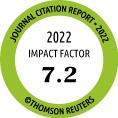Çerçi P, Kendirlinan R, Büyüköztürk S et al. Allergol Immunopathol (Madr). 2023 Sep 1;51(5):84-92. doi: 10.15586/aei.v51i5.946.
Abstract
Background: Hypersensitivity reactions (HSRs) to nonsteroidal anti-inflammatory drugs (NSAIDs) are a significant clinical issue. Several classifications have been proposed to categorize these reactions, including the current European Academy of Allergy and Clinical Immunology/European Network for Drug Allergy (EAACI/ENDA) classification. This study aimed to evaluate the applicability of this classification in a real-world clinical setting.
Methods: We conducted a national multicenter study involving patients from nine hospitals in four major urban centers in Turkey. All patients had a suggestive clinical history of hypersensitivity reactions to NSAIDs. Researchers collected data using a structured form and classified reactions based on the EAACI/ENDA classification.








